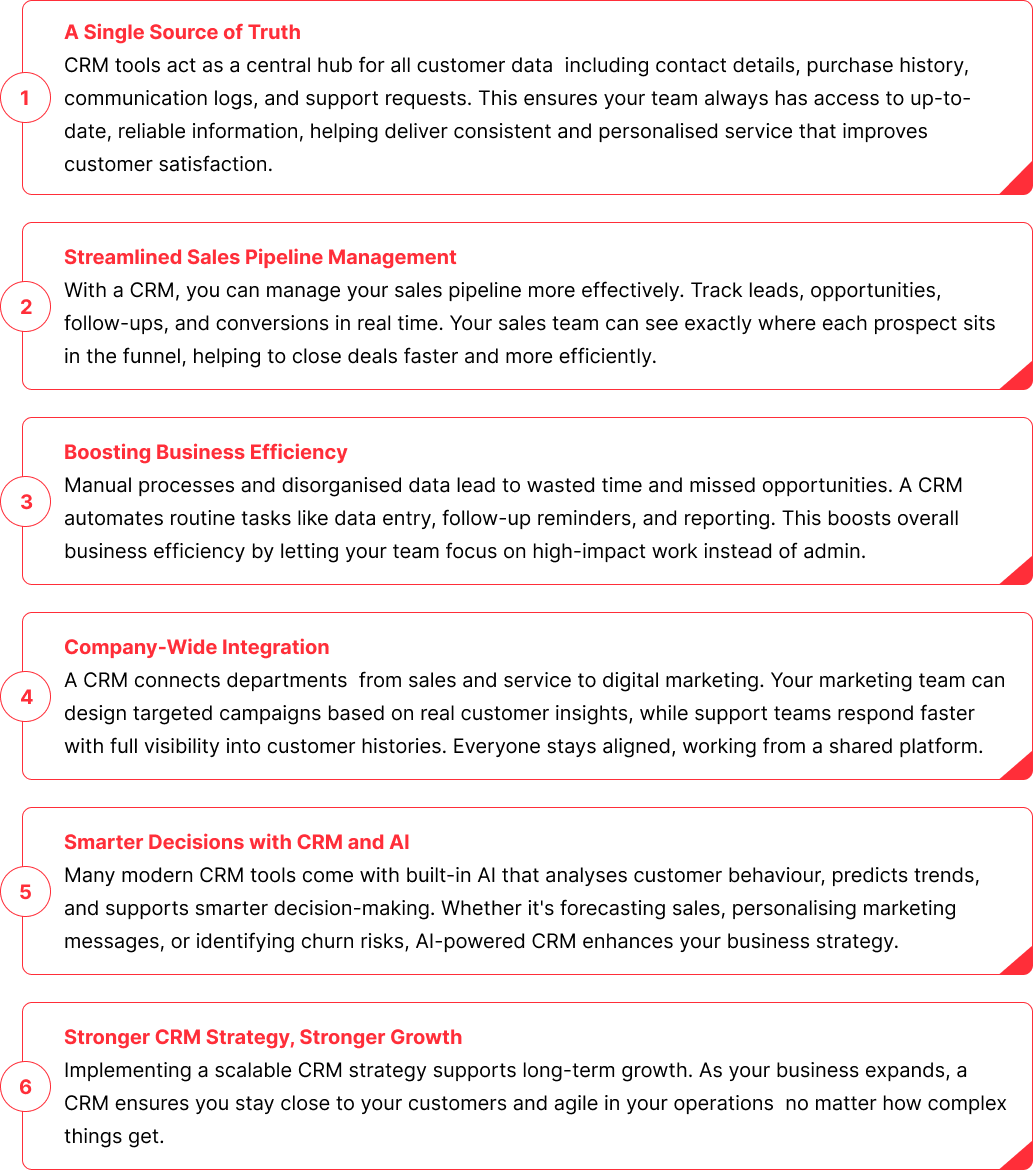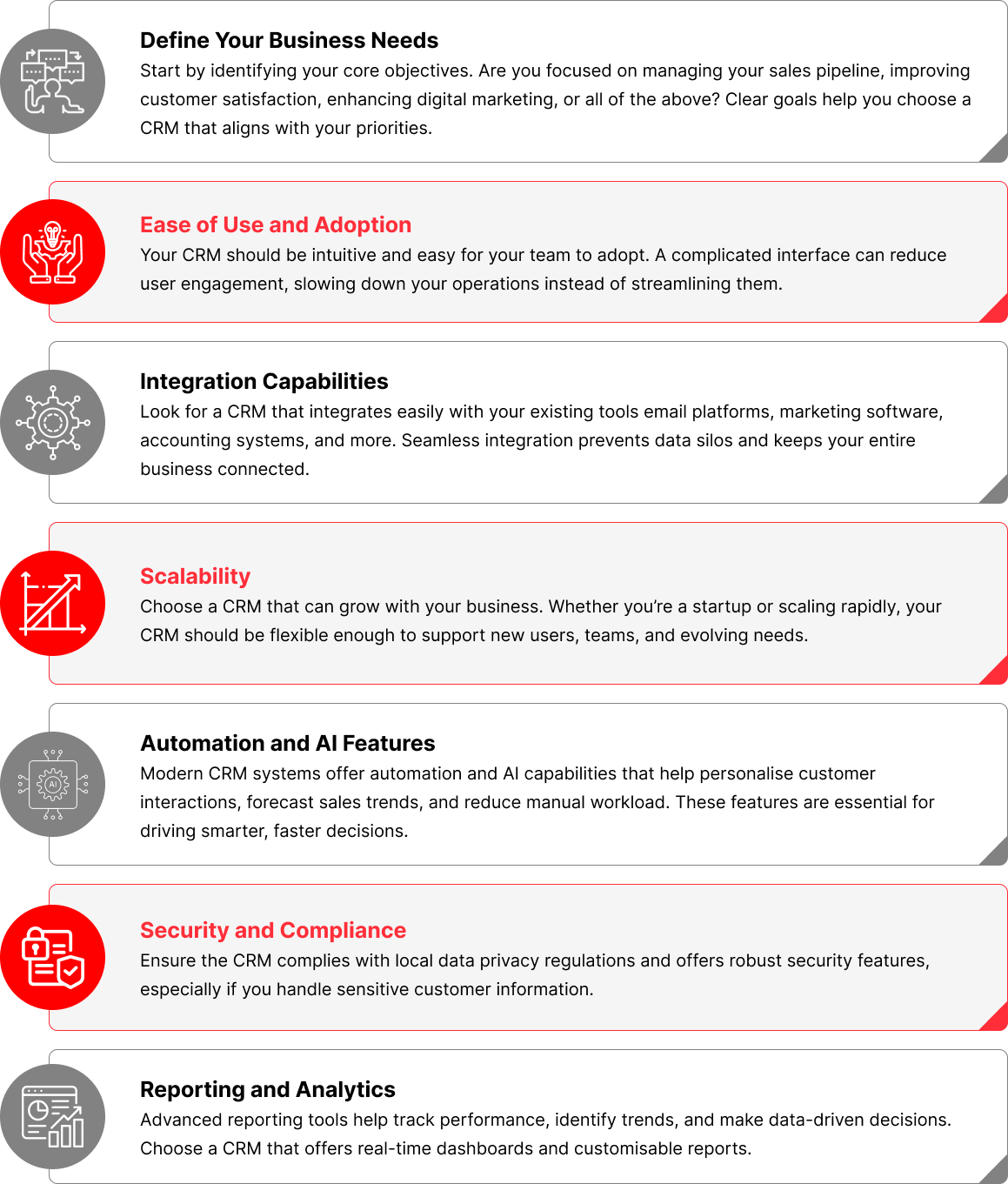- 9th May, 2025
- By Rob Lawson
The Power of CRM in Modern Business

Building strong customer relationships has always been at the heart of every successful business. However, in the past, managing and tracking these relationships was often a fragmented and time-consuming task. Customer data was stored manually in filing cabinets, Rolodexes, or scattered across spreadsheets making it difficult to share insights across teams like sales and marketing, and often resulting in missed opportunities.
The advent of the internet brought a surge of marketing technology platforms, enabling businesses to build, manage, and monitor customer relationships through Customer Relationship Management (CRM) systems.
The Essence of CRM
Customer Relationship Management (CRM) is more than just software it’s a strategic approach that helps businesses manage interactions with customers and prospects to build stronger, lasting relationships and drive growth. While once the domain of large enterprises, CRMs have evolved into affordable, accessible solutions suited to businesses of all sizes. In today’s fast-paced and ever-changing business landscape, CRM has become an essential tool revolutionising customer engagement, streamlining operations, and enhancing overall productivity.
At first glance, CRM might seem complex or overwhelming. But in reality, it’s a powerful way for businesses to stay organised, gain valuable customer insights, and remain competitive. Let’s take a deep dive into what CRM is, how CRM systems work, why they’re essential for businesses of all sizes, and how you can leverage them effectively to transform your operations.
Understanding CRM
When people mention CRM, they’re typically referring to a CRM system software designed to track and manage every interaction a business has with its prospects and customers. This can include everything from sales calls and support tickets to marketing emails and social media engagements.
Modern CRM tools consolidate customer and company data from multiple sources into a single platform. Many also leverage artificial intelligence (AI) to enhance relationship management across the entire customer lifecycle supporting teams in marketing, sales, digital commerce, and customer service.
How CRM System Works
 | Centralises Customer Data: Collects and stores customer information from various channels like emails, phone calls, social media, and website visits in one platform. | |
 | Organises Interactions: Tracks all customer interactions—such as sales conversations, support requests, and marketing responses—to provide a complete customer history. | |
 | Improves Personalisation: Enables teams to tailor communication and follow-ups based on past interactions and customer preferences. | |
 | Automates Routine Tasks: Handles repetitive processes like sending follow-up emails, scheduling appointments, and updating records automatically. | |
 | Integrates with Other Tools: Connects with sales, marketing, and service platforms to streamline workflows and ensure smooth cross-departmental collaboration. | |
 | Uses AI for Insights: Employs artificial intelligence to analyse customer behaviour, predict trends, and deliver actionable insights. | |
 | Enhances Customer Relationships: Helps businesses stay engaged with customers, deliver better service, and boost overall satisfaction and loyalty. |
Types of Contacts in CRM
A well-implemented CRM system can help businesses track:
 | Suspects | |
 | Prospects Those who are more interested and have taken steps to engage with your business. | |
 | Customers Individuals who have successfully conducted business with you. | |
 | Past Customers Those who have interacted with your services in the past. | |
 | Suppliers and Partners Key associates who facilitate your business operations. | |
 | Do Not Contact (DNC) Individuals or entities outside your target market. |
Why Your Business Needs a CRM
Modern business is more connected and more complex than ever before. The average company now uses over 1,000 digital tools, yet less than 30% of them are integrated. This results in siloed data, missed opportunities, and inconsistent customer experiences.
At the same time, 73% of customers expect companies to understand their unique needs and expectations. But how can businesses meet these rising demands when customer information is scattered across emails, spreadsheets, social media, and support systems?
The answer lies in a unified approach to customer management and that starts with a CRM system.
A well-structured CRM strategy helps businesses consolidate information, improve business efficiency, and deliver the seamless, personalised experiences that drive customer satisfaction and loyalty.

Integration with Other Business Tools
Modern CRMs do not function in isolation. Most systems can integrate with various office software such as:

This seamless integration means reduced data entry, providing your sales team with more time to focus on core activities.
Choosing the Right CRM
Not all CRM tools are created equal and the right choice depends on your business size, goals, and CRM strategy. A poorly matched CRM can add complexity instead of solving problems, while the right one can significantly boost business efficiency and customer engagement.
Here are key factors to consider when selecting the right Customer Relationship Management system for your business:

Key Takeaway
In an era where customer expectations are higher than ever and competition grows fiercer by the day, businesses can no longer afford to rely on fragmented systems and guesswork. A well-chosen CRM system is more than just a technology investment it’s the foundation for smarter operations, deeper customer engagement, and long-term growth.
One of the key advantages of CRM systems is the ability to consolidate and organise customer data in a way that’s efficient and easy to manage. The customer data we have from profound marketing and advertising can be organised well with a CRM system, ensuring that every interaction with a customer, from marketing to sales, is aligned and streamlined. This centralisation of customer insights not only reduces the risk of missed opportunities but also enables businesses to understand and anticipate customer needs more effectively.
The key lies in selecting the right tools, building a strong CRM strategy, and ensuring alignment across departments like sales, support, and digital marketing.
As businesses evolve, those that prioritise efficiency, agility, and customer relationships will lead the way. If you're ready to take that step, it helps to have the right digital partner by your side.